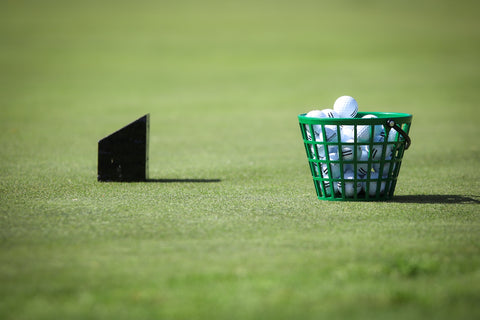You have to remember once you step onto the course to play, you are bringing to the table everything you have worked on up until that point. Once you are on the first tee, there’s no more working on swing mechanics. There’s no more hitting the gym to get stronger. There’s no ordering that fancy new driver and having it delivered on the fifth tee box because your current driver is letting you down. You have to work with what you have. The only thing you do have control over changing on the course is your brain, your thoughts, and how your brain communicates with your body.
That’s why I believe your brain is your most important asset on the course. Here are 3 simple things you can take to the course with you that can help you no matter what level you are at with your game.
- There are no “bad shots”. There is only “great”, “good”, or “good enough”. This specific idea comes from the book “Be a Player” by Pia Nilsson and Lynn Marriott, who established the Vision54 program. I highly recommend this book. Basically, there are no negative shots. If it’s “good enough”, then that is still positive. You have to figure out what each of these shots looks like for you. For example, my “great” shots are shots that do exactly what I envisioned in my brain. A “good” shot would be a shot that still gives me a decent chance at par, bogey at worst, and a “good enough” shot would be a shot that moves me forward, closer to the hole.
- If it doesn’t feel right, DON’T HIT IT. I have had to learn this many a time, even though I know in my gut I shouldn’t do it. I still grab that club that feels uncomfortable and try to hit the shot that freaks me out. Do not hit that golf ball until you feel 100% comfortable hitting that shot with the club you have put in your hands.
- Find what helps you stay in the present. As soon as I start playing well and my brain thinks about my final score, everything goes down the drain. My favorite quote is “There is the present, and then there is nothing else.” It’s so simple but SO TRUE. There’s no point in thinking about a good or bad score at the end, because it doesn’t even exist yet. A few tricks that help me stay in the present are slowly counting to ten in my head when my thoughts start to drift, or having my current favorite catchy song in my head to sing or hum and distract my brain.
If these thoughts spark intrigue for you, I definitely recommend you pick up a copy of “Be a Player”, which you can find on Amazon. It’s my favorite mental game book and gives you actual exercises for your brain you can do on the course to figure out what works best for you.
-Whitney Hickman




